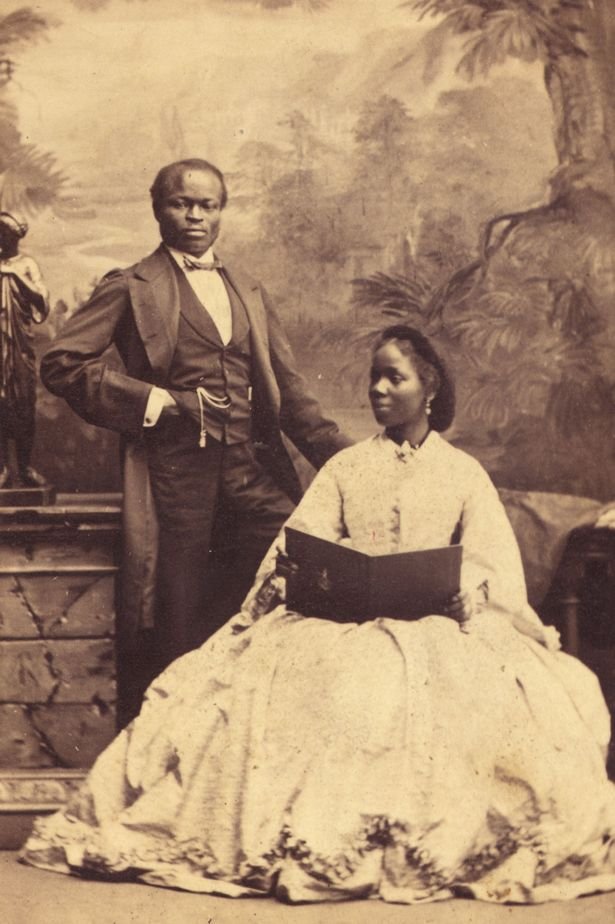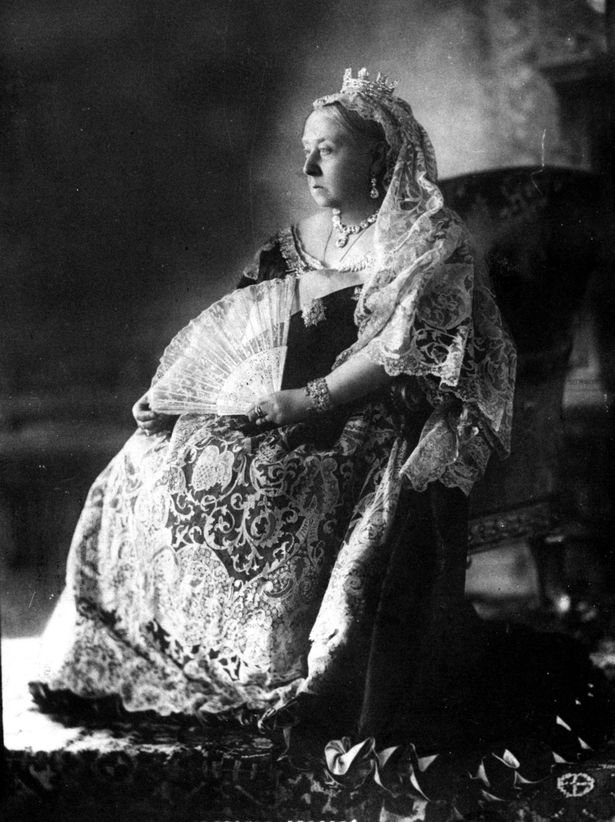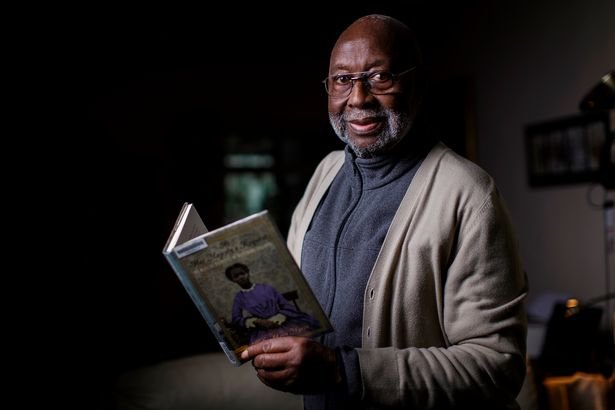The little-known tale of the African slave girl adopted by Queen Victoria

The chemistry between Queen Victoria and Prince Albert was just as strong in the 19th-century as it is between Jenna Coleman and Tom Hughes on our screens.
The portrayal of the royal couple in ITV ’s hit drama Victoria reveals how the monarch defied stuffy standards to enjoy an active sex life with her hubby.
But Victoria’s passion for Albert came with a consequence. She had nine children, and even called her frequent pregnancies the “shadow side” of marriage.
Yet it’s a little known fact that Victoria adopted a 10th child, Sarah Forbes Bonetta. And she wasn’t just any child.
The little princess was Yoruba royalty from Nigeria, before her parents were brutally killed during a military raid.
Aged just five, she was captured by the King of Dahomey in 1848 and destined for human sacrifice. But the orphan was rescued by British naval officer Frederick Forbes, who was on a mission to end the slave trade among the Dahomans.
He convinced the slave hunters to present young Sarah as a “gift” to the queen and took her back on his ship HMS Bonetta, hence her adoptive name.
Sarah’s story is depicted in the Victoria festive special, airing on Christmas Day.
Her great-great grandson Arnold Awoonor-Gordon says: “For an African slave to be taken on by the British royal family in the 19th century is remarkable.
“Sarah grew up with the queen’s children around her and was treated just like a member of the queen’s own family.

Sarah with her husband Captain James Davies.
“Queen Victoria was very kind to her, and it was a relationship that was really ahead of its time.” Arnold, 84, learned of his ancestry when he decided to research his great-gran Emily’s stories of a family member saved from the slave trade then shipped to Buckingham Palace .
He made a quick call to Windsor Castle 10 years ago. To his astonishment, the tales were not fantasy.
The retired broadcaster, originally from Sierra Leone, says: “We were so pleased to find the stories that we have a direct connection with British royalty were true. Victoria was a pioneer at the time. She was fascinated by other cultures and very open-minded.
“Captain Forbes essentially saved Sarah’s life, rescuing her from years of slavery and even death. Sarah, who the queen called Sally, loved Victoria. She named her oldest daughter after her.”

After Sarah’s death Victoria paid for her daughter’s education.
Relatives told Arnold that Sarah enjoyed her time in Buckingham Palace, but records suggest she felt out of place.
In the ITV special, Sarah, played by Zaris-Angel Hator, is seen marvelling at the snow and shyly hiding in corners.
The queen is shown being impressed by how bright Sarah is. But, as in real life, Albert persuades her Sarah isn’t happy at the palace, and she goes to live with the Forbes family in Gillingham, Kent.
After a year Sarah was sent to Sierra Leone for her education, before returning to England in 1855.
While show creator Daisy Goodwin acknowledges Sarah’s discomfort in the palace, she agrees with Arnold that the relationship was thoroughly modern.
“Victoria didn’t have prejudices at all and I think she saw people as her subjects, and didn’t discriminate between them,” she says.
“It’s quite unexpected, but it’s true. She was surprisingly broad-minded and modern, which made her more attractive to write about.”
Victoria remained an important figure throughout Sarah’s life. In 1862, Sarah agreed to marry wealthy Yoruba businessman Captain James Davies, but is believed to have been reluctant due to his being 13 years older.
After some pressure from the queen, the 18-year-old went ahead and wed him. Sarah continued to visit the queen and in 1867 introduced her to her daughter, Victoria. The queen agreed to become her godmother.
Sarah then returned to Lagos, Nigeria, where she had two more children, Arthur and Stella, though she still frequently took trips to visit Victoria.
But Sarah had been plagued by poor health. One reason she was sent to school in Sierra Leone was because the queen thought her chronic cough was caused by the British climate. Tragically, Sarah died of tuberculosis in 1880, aged 37. She was buried in Funchal, Madeira.
Arnold keeps a picture of her grave at his home in Chatham, Kent. He says: “On Sarah’s death, the queen wrote in her diary, ‘Saw poor Victoria Davies, my black godchild, who learnt this morning of the death of her dear mother’.

Real-life great-great grandson Arnold.
“She went on to pay for little Victoria’s education, so she continued to help the family and have influence on them.”
There was another motivation for the queen’s unusual adoption. As explored in the Christmas special, Comfort and Joy, Victoria was haunted by her own childhood. She wrote in her diaries how isolated and “melancholy” she had felt.
Jenna, who plays the queen in the show, says: “Sarah enters Victoria’s life as an orphan, abandoned and alone, and I think Victoria can see something of herself in Sarah. It becomes an almost cathartic experience. By trying to help Sarah rebuild herself, Victoria eases the wounds of her own childhood.”
Daisy agrees. “I was trying to show that she sees a little girl who’s a princess and has lost her family, and wants to show how a princess should be treated.
“Victoria is trying to mend the wounds of her past and Albert is wondering, ‘Are you really thinking about the child, or about yourself?’”
Dismissing speculation that Victoria did not bond with her children, Daisy says: “There is no doubt she did in fact love her children, she just wasn’t gooey.”
She adds she depicts the queen as “a volcano, not an iceberg”. For Arnold, his ancestor’s incredible story is proof of this. He sees Victoria as a leading campaigner against the slave trade.
Arnold adds: “I look at Queen Victoria as someone who helped to rescue my relatives. As Victoria herself described in her diaries, she ‘saved her little Sally’.”